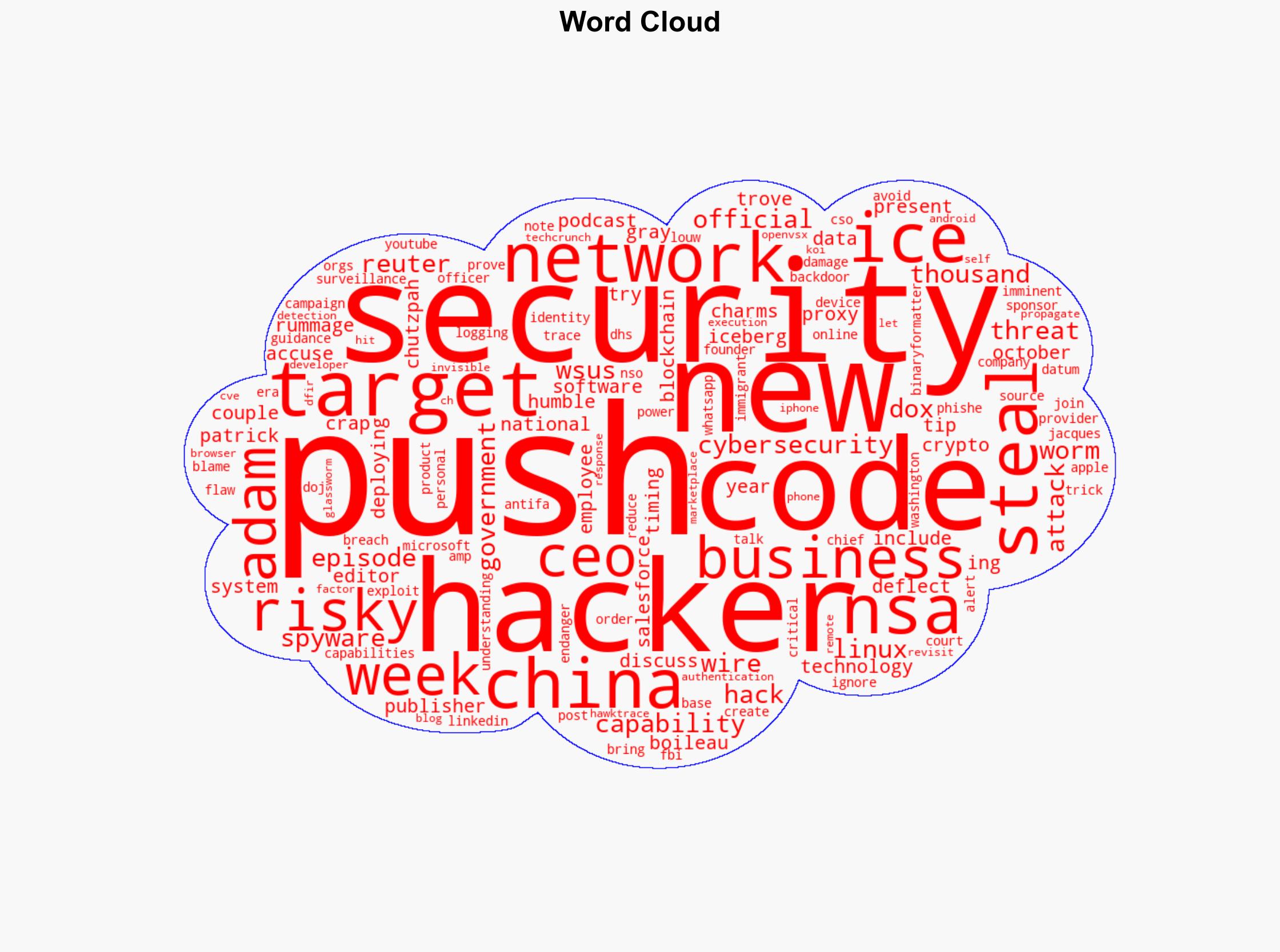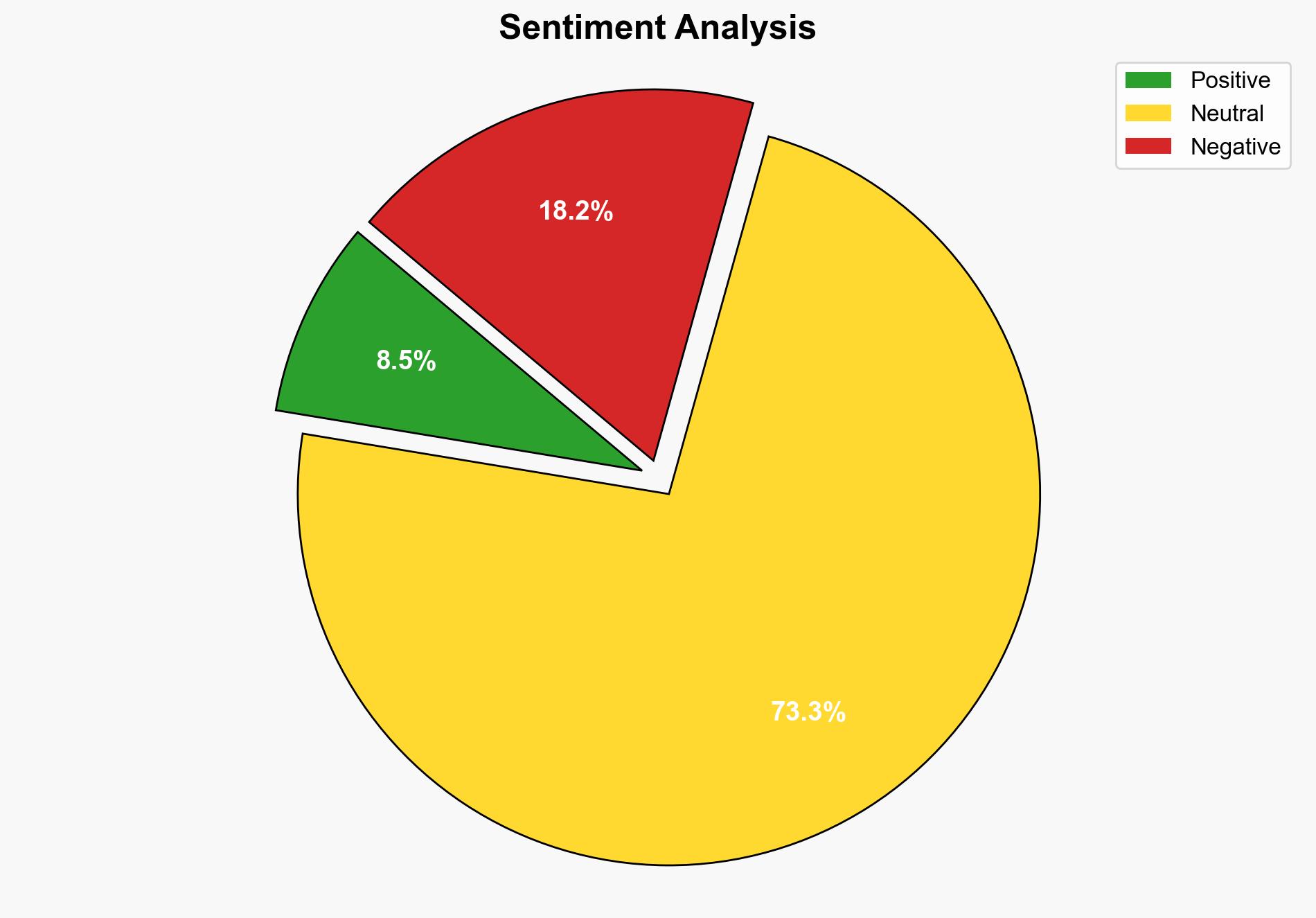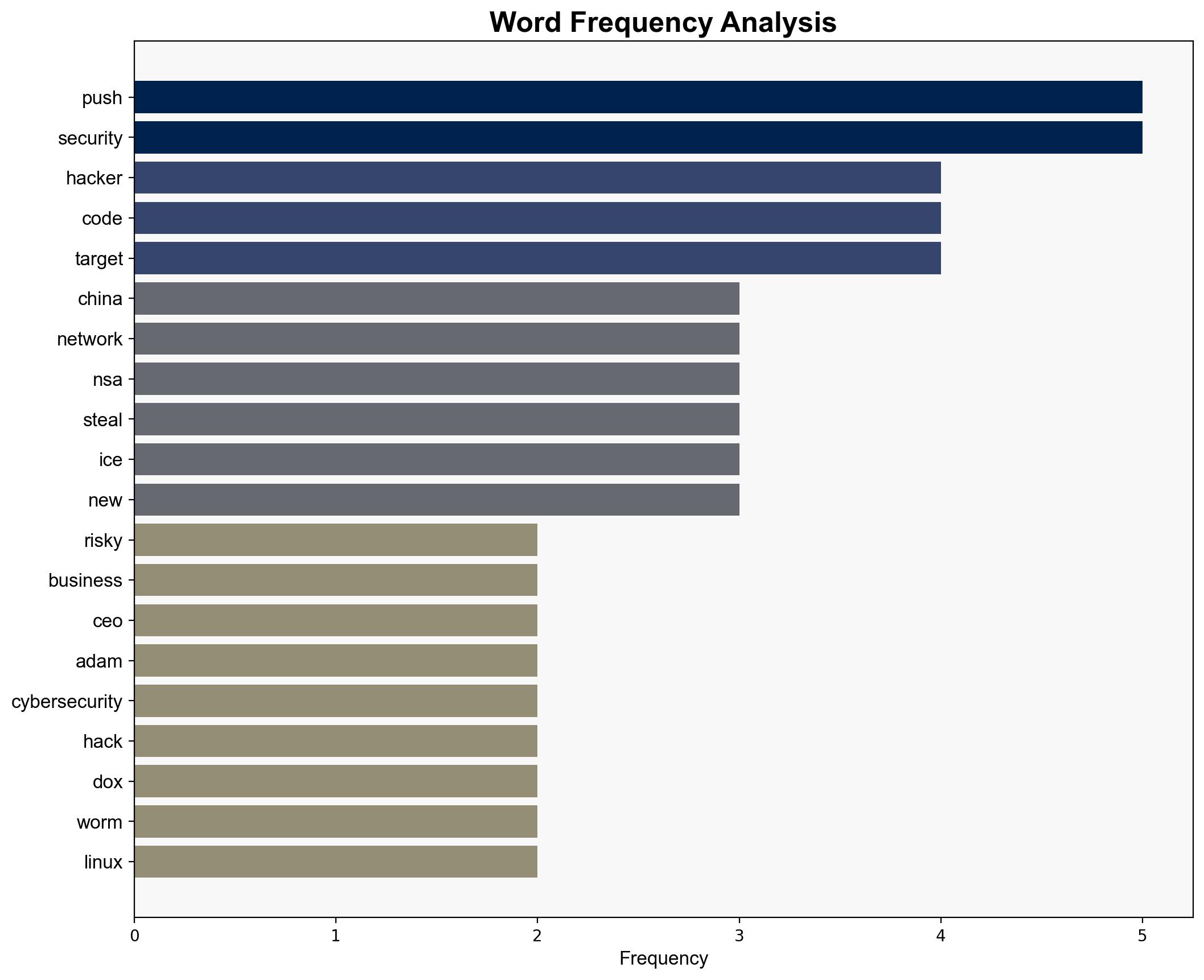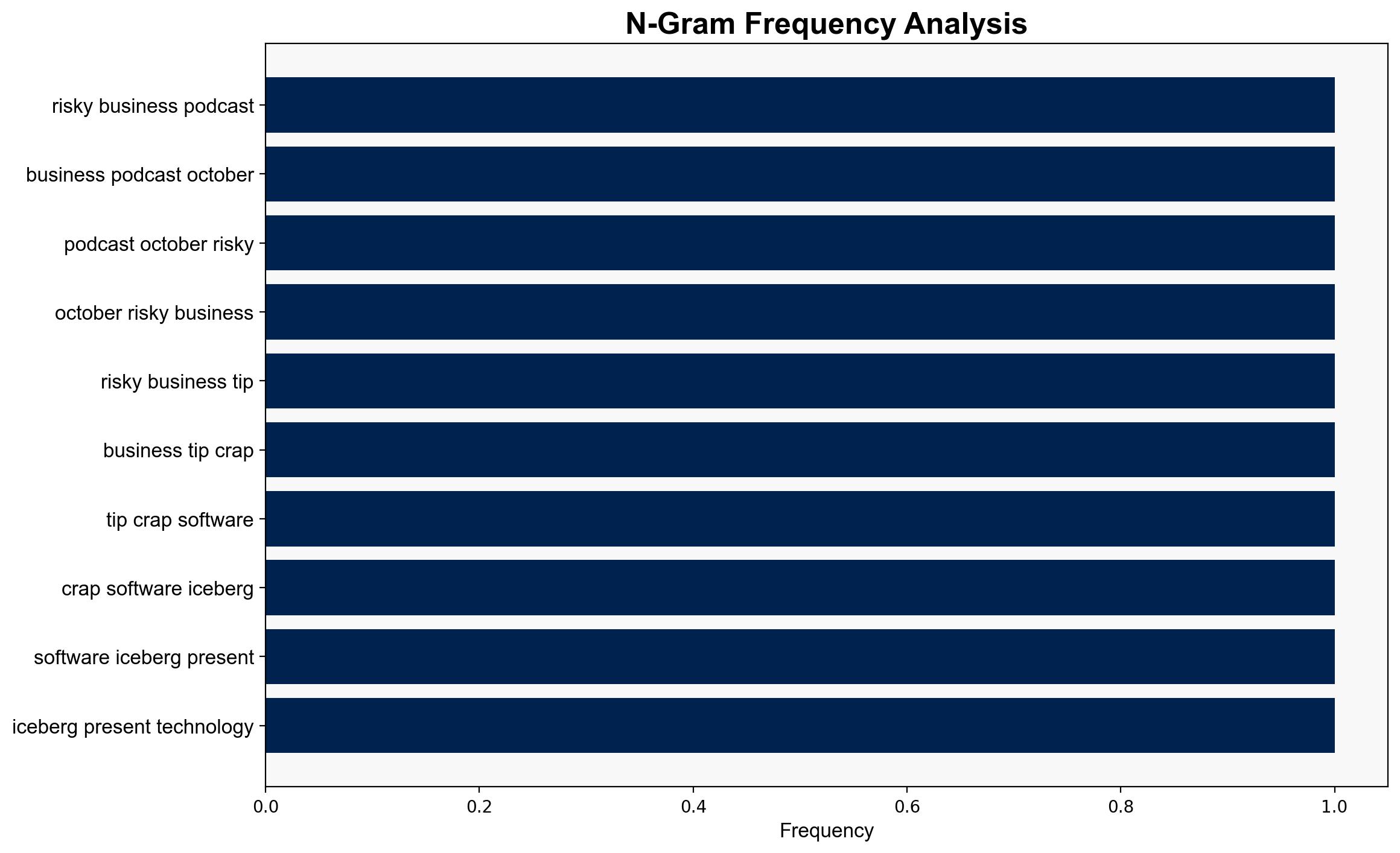Risky Business 811 — F5 is the tip of the crap software iceberg – Risky.biz
Published on: 2025-10-22
Intelligence Report: Risky Business 811 — F5 is the tip of the crap software iceberg – Risky.biz
1. BLUF (Bottom Line Up Front)
The most supported hypothesis is that state-sponsored cyber activities, particularly from China, are escalating and diversifying in tactics, posing significant threats to national and organizational cybersecurity. Confidence Level: High. Recommended action includes enhancing cybersecurity protocols and international cooperation to counteract these threats.
2. Competing Hypotheses
Hypothesis 1: The cybersecurity threats discussed are primarily state-sponsored, with China being a significant actor, aiming to gather intelligence and disrupt Western networks.
Hypothesis 2: The threats are largely the work of independent hacker groups exploiting vulnerabilities for financial gain, with state actors being opportunistic rather than primary drivers.
Using ACH 2.0, Hypothesis 1 is better supported due to the pattern of sophisticated attacks aligning with known state-sponsored tactics, such as targeting government officials and deploying advanced spyware. Hypothesis 2 lacks consistent evidence of financial motives in the attacks described.
3. Key Assumptions and Red Flags
– Assumption: State actors have the capability and intent to conduct such operations. This is supported by historical precedence but assumes continuity in strategy.
– Red Flag: The attribution to China might be influenced by confirmation bias due to existing geopolitical tensions.
– Missing Data: Lack of detailed forensic analysis on the attacks limits the ability to conclusively attribute them to state actors.
4. Implications and Strategic Risks
The escalation of cyber activities could lead to increased geopolitical tensions, especially if retaliatory measures are considered. Economically, persistent cyber threats can undermine trust in digital infrastructures, impacting businesses globally. The psychological impact includes heightened fear and uncertainty among the public and organizations.
5. Recommendations and Outlook
- Enhance cybersecurity measures, focusing on threat detection and response capabilities.
- Foster international collaboration to share intelligence and develop unified strategies against cyber threats.
- Scenario Projections:
- Best Case: Increased cooperation leads to effective deterrence and reduction in cyber incidents.
- Worst Case: Cyber attacks escalate into broader geopolitical conflicts.
- Most Likely: Continued cyber skirmishes with periodic escalations and retaliations.
6. Key Individuals and Entities
– Patrick Gray
– Adam Boileau
– Jacques Louw
7. Thematic Tags
national security threats, cybersecurity, counter-terrorism, regional focus




